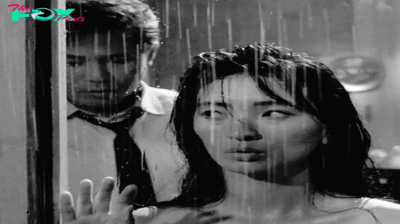Entertainment
Having caught up with Katie Mitchell’s Aix manufacturing, Pelléas won’t ever fairly be the identical once more – Seen and Heard Worldwide
 France ComPetition d’Aix-en-Provence [2] – Debussy, Pelléas et Mélisande: Soloists, Refrain (refrain grasp: Benedict Kearns) and Orchestra of the Lyon Opera / Susanna Mälkki (conductor). Grand Théâtre de Provence, Aix-en-Provence, 9.7.2024. (MB)
France ComPetition d’Aix-en-Provence [2] – Debussy, Pelléas et Mélisande: Soloists, Refrain (refrain grasp: Benedict Kearns) and Orchestra of the Lyon Opera / Susanna Mälkki (conductor). Grand Théâtre de Provence, Aix-en-Provence, 9.7.2024. (MB)

Manufacturing:
Director – Katie Mitchell
Set designs – Lizzie Clachan
Costumes – Chloe Lamford
Lighting – James Farncombe
Motion – Joseph W. Alford
Dramaturgy – Martin Crimp
Forged:
Pelléas – Huw Montague Rendall
Mélisande – Chiara Skerath
Golaud – Laurent Naouri
Arkel – Vincent Le Texier
Geneviève – Lucille Richardot
Yniold – EMMA Fekete
Physician, Shepherd – Thomas Expensive
Actors – Sarah Northgraves, Kamila Kamińska, Olivia N’Ganga
Opera, or the Undoing of Ladies is a celebrated remedy of the style by the French thinker Cath√©rine Cl√©ment. Cl√©ment‚Äôs guide has rightly are available for a great deal of criticism, not least because it signally fails to deal with opera as a musical style, wanting solely at plots and ignoring the liberation the feminine voice specifically can embody. I heartily suggest Carolyn Abbate‚Äôs assessment, entitled ‚ÄòOpera, or the Envoicing of Ladies‚Äô (not, as my autocorrection has simply insisted, ‚Äòthe Invoicing‚Äô, although some may nod wearily at that too). That stated, nobody might significantly deny the remedy of feminine characters in most repertoire works is to our thoughts problematical. Katie Mitchell definitely wouldn’t; that certainly, is the start line for her landmark manufacturing of Pell√©as et M√©lisande, first seen right here in Aix in 2016, and on which I’m now catching up.
What Mitchell does may effectively, in 2024, appear an apparent and mandatory factor to do, but it’s troublesome to think about a earlier case (simply as with, say, Joachim Herz within the Ring or Wieland Wagner in Parsifal).That it appears apparent should largely to be ascribed to her work and that of different feminist administrators. In the end, the concept is to current the work from M√©lisande‚Äôs standpoint, somewhat than have her ‚Äì as one may argue the work does ‚Äì as a clean canvas on which males and, extra broadly, patriarchy paint their fantasies. The technique of doing so is to current the drama as M√©lisande‚Äôs dream. A gap dumb present has her, on her marriage ceremony day, take a being pregnant check ‚Äì some folks, for causes unclear, discovered this amusing. Fairly a predicament, and thus the dream-drama is ready in movement, Pell√©as representing the daddy, Golaud the husband. The fort extends from the bed room through which the motion has begun, and to which it typically returns. Typically there may be one M√©lisande; typically, seeing herself in the best way one typically can in desires, there are two.
Golaud is a serial abuser; not solely does Mélisande sees herself raped, however the woman (on this manufacturing) Yniold too. Pelléas is a nervous wreck and mummy’s boy but retains his attract, in the end satisfying Mélisande in a approach Golaud by no means might, in extremely erotic scenes that guarantee one stage of musical which means hits house as not often earlier than, while a charismatic, creepy Arkel in the end guidelines the roost. There may be even a prize received for non-irritating, non-gratuitous use of cell telephones, Golaud sending Yniold to Mélisande’s room to report on the lovers and persevering with to bark instructions through that medium. The fort’s claustrophobia is very real looking, as is the remainder of the drama, however visible Symbolism will stay to combat one other day and Debussy’s rating stays.

Susanna Mälkki and the achieved Lyon orchestra usually had it unfold at what provides the wonderful impression of being its ‘personal’ tempo, nevertheless chimerical that preferrred could also be in apply. (It takes a great deal of work to sound ‘pure’.) Inspiration from Wagner, Tristan and Parsifal specifically, was sturdy, dramatically pointed with out overwhelming. There was, although, loads of room for different stars on this musical constellation, French forebears not the least of them. Whether or not this had been aware or in any other case, letting the rating do ‘its’ work, does probably not matter. Debussy remained questioning, ambiguous, but by no means merely imprecise; this was drama, not mere ‘environment’, particularly together with Mitchell’s staging.
Chiara Skerath rose to Mitchell‚Äôs challenges and extra, providing a multi-faceted M√©lisande as finely sung because it was acted. She and her alter ego weren’t on the stage the entire time, however one might have been forgiven for pondering, nonetheless extra feeling, that they had been. Huw Montague Rendall‚Äôs broken but alluring Pell√©as was, in some methods, essentially the most putting of all, fantastically, elegantly sung, but with a halting scenic awkwardness that solely on the top of ardour could possibly be put to at least one aspect. Laurent Naouri‚Äôs brutal Golaud and Vincent Le Texier subtler, but in some methods darker nonetheless, Arkel, cunningly calculating far forward of the remaining, had been equally memorable in and trustworthy to their roles. Satirically, even right here, one couldn’t however hear M√©lisande‚Äôs standpoint through their voices. That isn’t intrinsically a nasty factor, in fact, since opera efficiency is an ensemble effort. All concerned performed their half, not least the stagehands at work revealing and concealing completely different elements of the world M√©lisande‚Äôs unconscious had created. We now (normally) have intimacy coordinators, however that growth may be very current; right here, Ita O‚ÄôBrien was credited. Given the extent of intimacy, her contribution can have been enormously valued by all.
For what we noticed and heard made us suppose and rethink on the spot. Even seeing the phrase ‚Äòcom√©diennes‚Äô within the programme gave pause for thought. In English, we now have finally begun to maneuver on from ‚Äòactors‚Äô and ‚Äòactresses‚Äô save in historic utilization, however that growth can be current and I recall pondering it learn oddly on my first encounter; French is in the meantime, given its lack of a impartial gender, starting to pursue a undertaking of ‚Äòfeminisation‚Äô, encouraging parity in the usage of feminine kinds. Who’s ‚Äòadditional on‚Äô? Are there essential questions when horrifying abuse rages unacknowledged? Solutions might or will not be clear, however Pell√©as won’t ever fairly be the identical once more.
Mark Berry
-

 Entertainment7h ago
Entertainment7h agoMike and Lauren Sorrentino Introduce Baby No. 3 to Kids in ‘Jersey Shore’ Exclusive Clip
-

 Entertainment10h ago
Entertainment10h agoNatasha Rothwell on Her Memorable Firsts
-

 Entertainment16h ago
Entertainment16h agoFace Me and Other Korean Medical Crime Shows That are Must Watch
-

 Entertainment21h ago
Entertainment21h agoClassic Korean Movies Like Piagol to Add to Your Watch List
-

 Entertainment21h ago
Entertainment21h agoOver 60 Million People Tuned in to Watch Jake Paul¬Ývs. Mike Tyson
-

 Entertainment1d ago
Entertainment1d agoPopular Hudson Valley Italian Restaurant Addresses Closing Rumors
-

 Entertainment1d ago
Entertainment1d agoRHOBH’s Dorit Kemsley Addresses Viral Smoking Scene on Season 14 Premiere: ‘I Was Being Chased’
-

 Entertainment1d ago
Entertainment1d agoThe 10 Best Podcasts of 2024
















